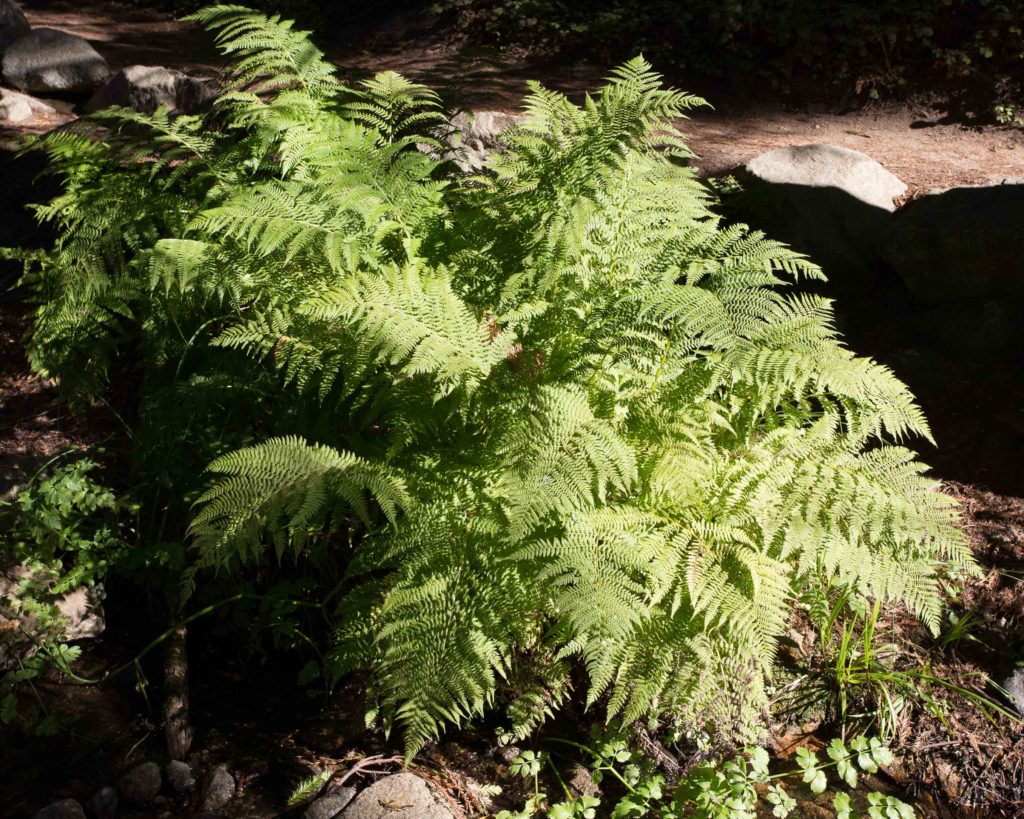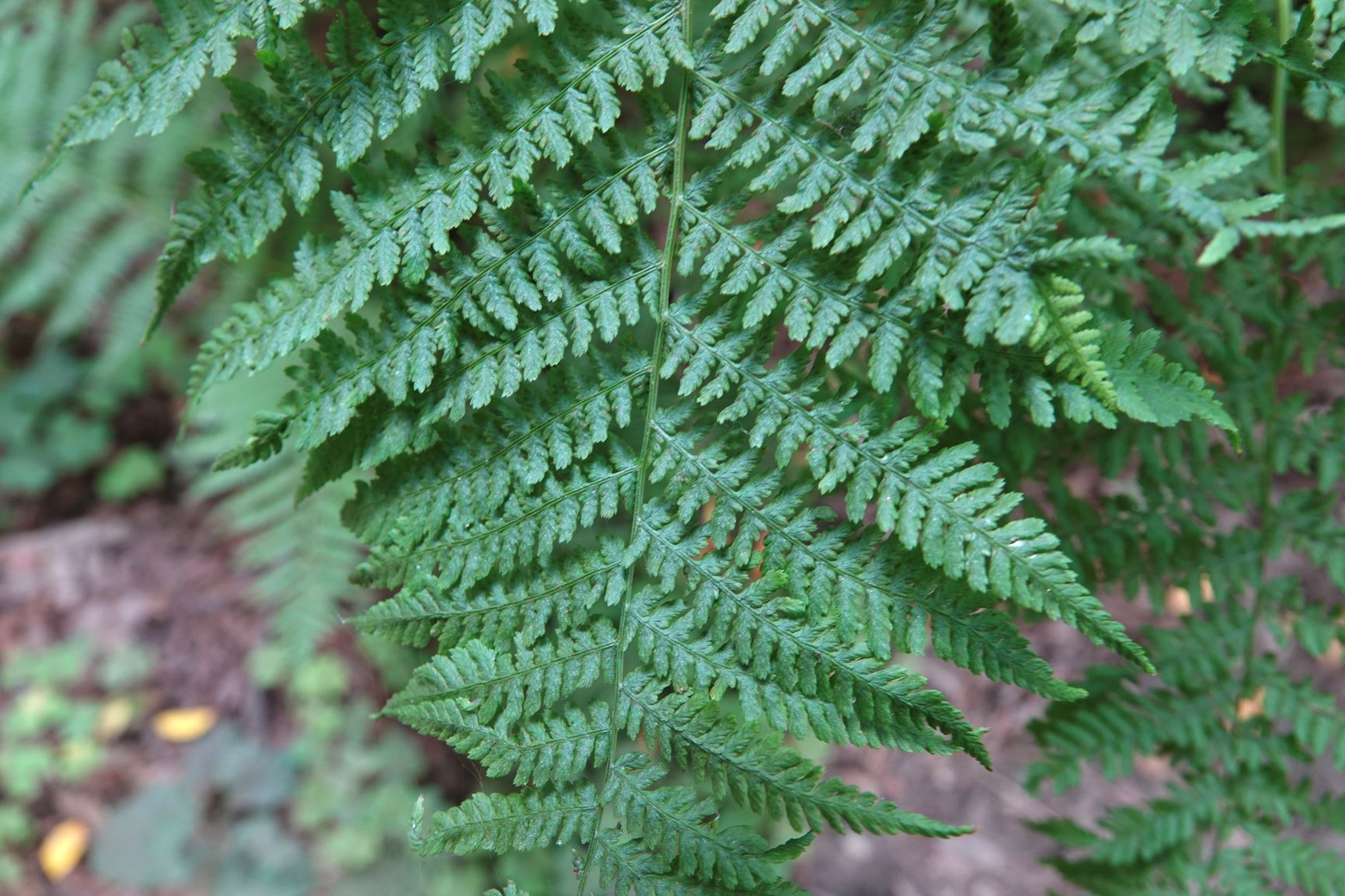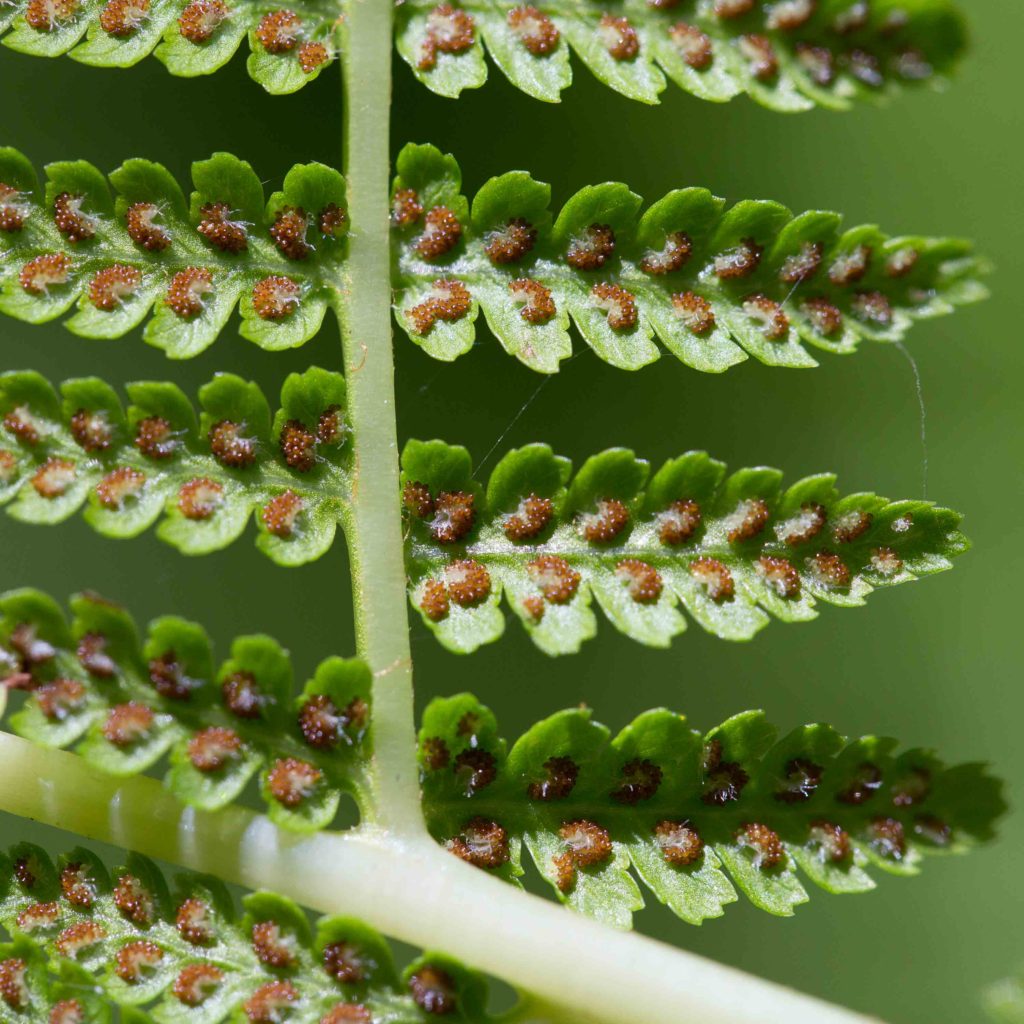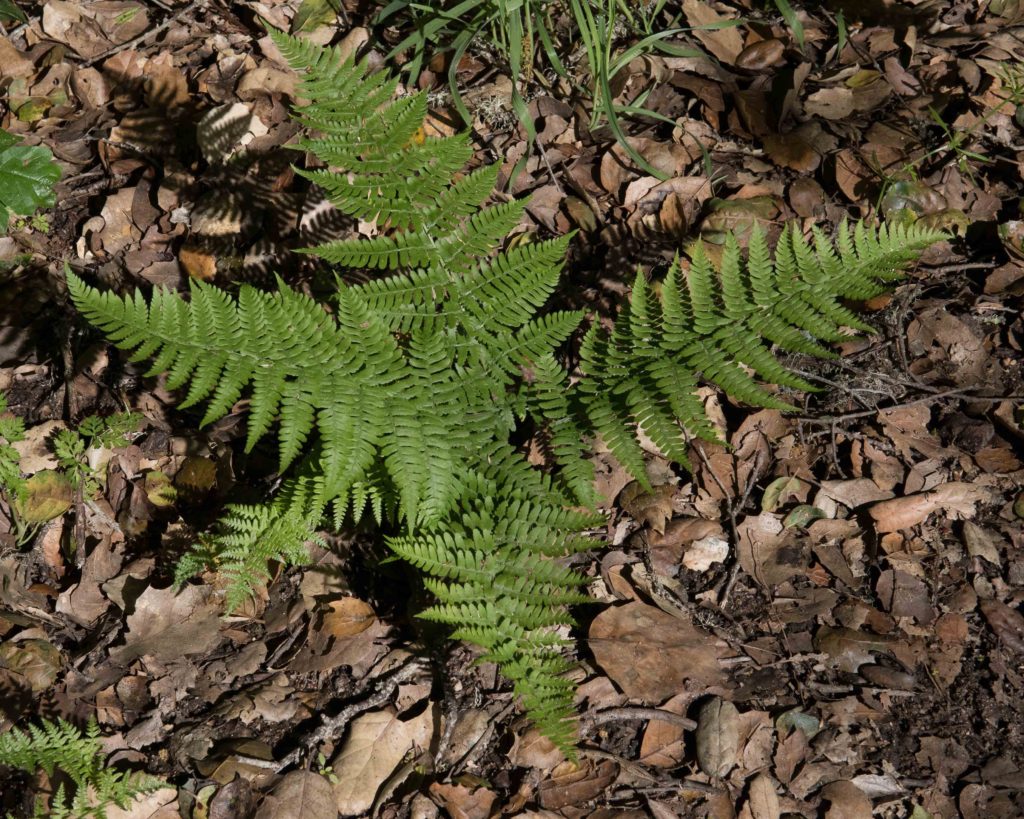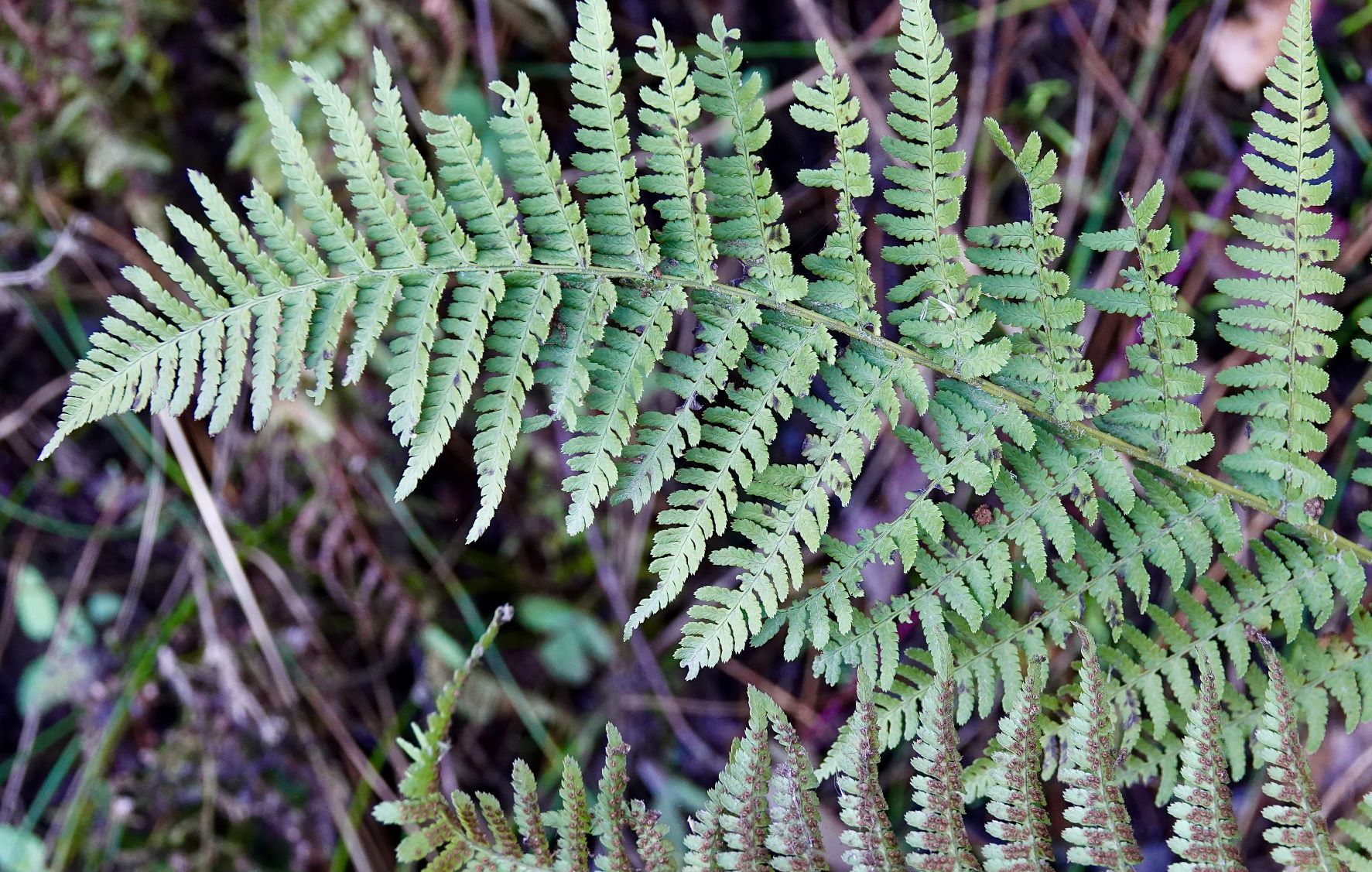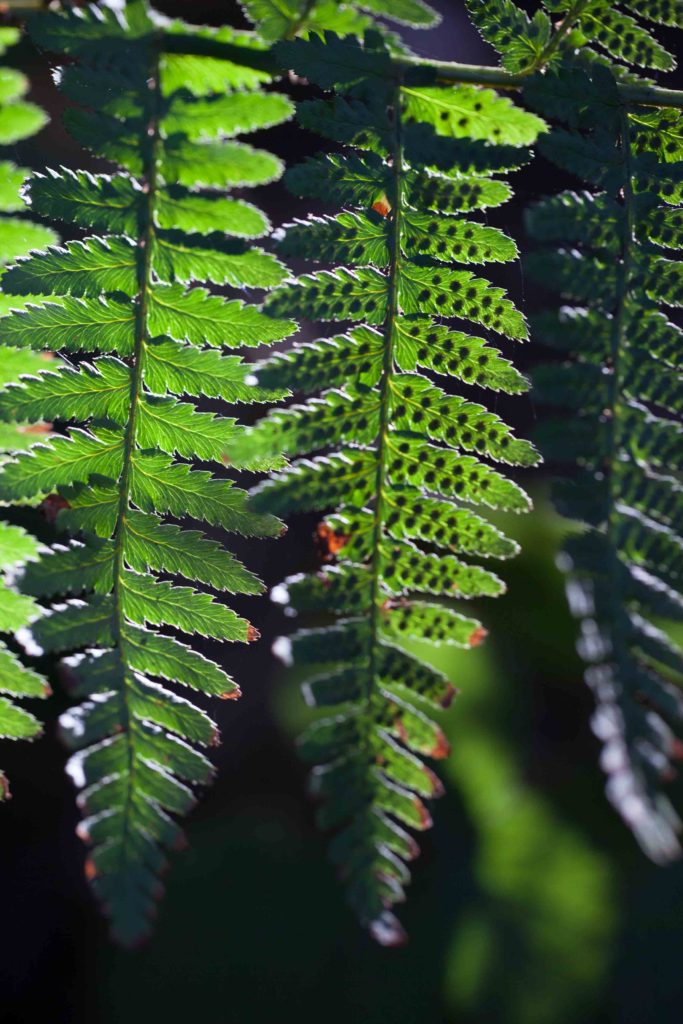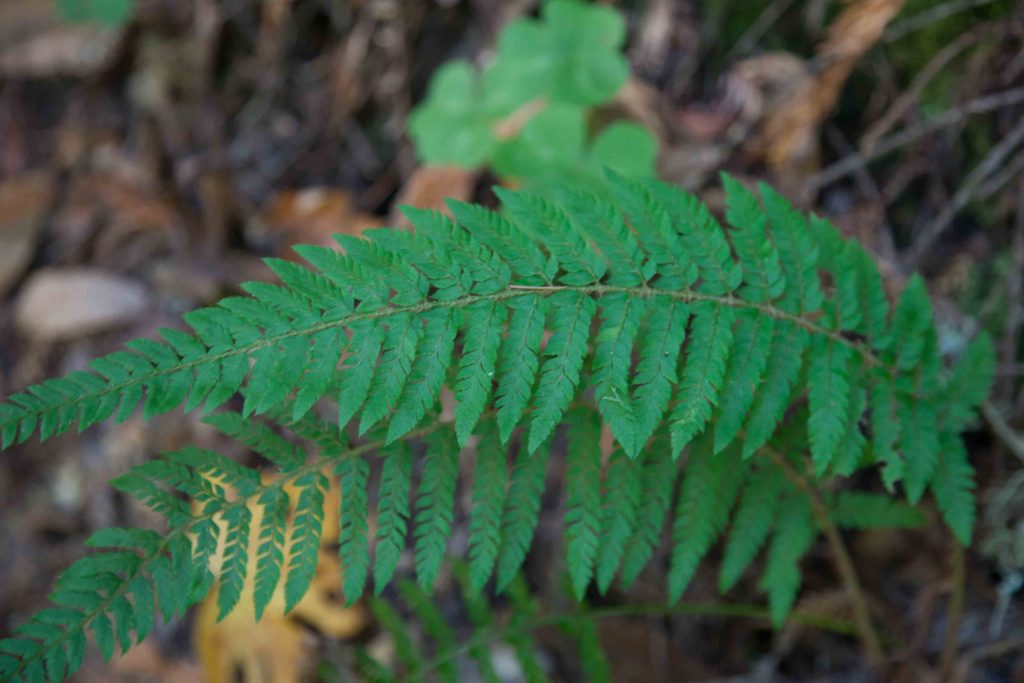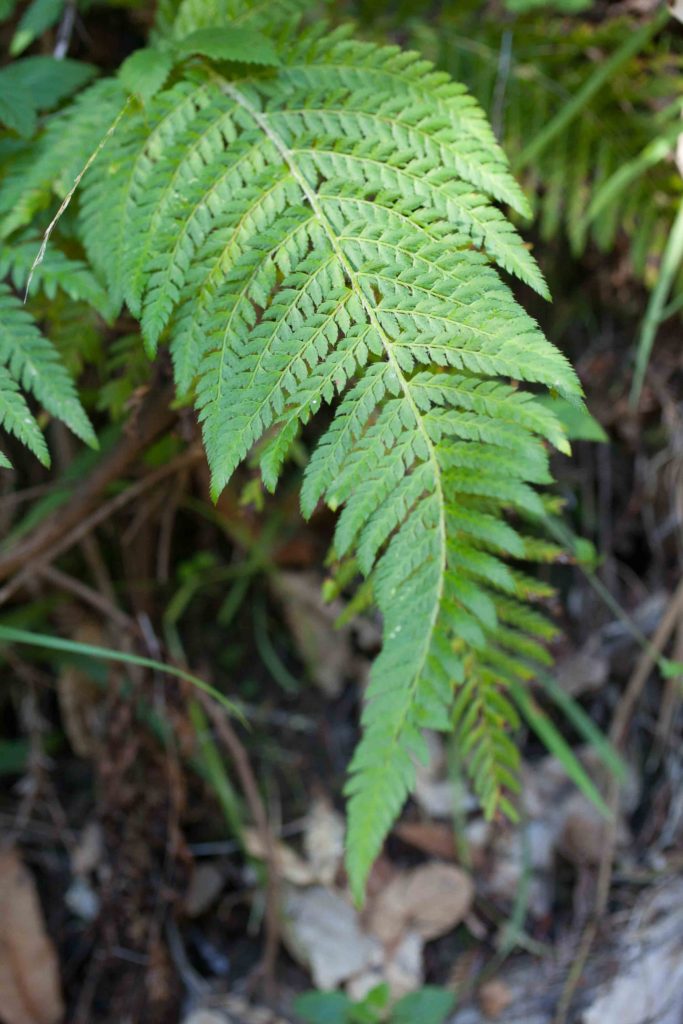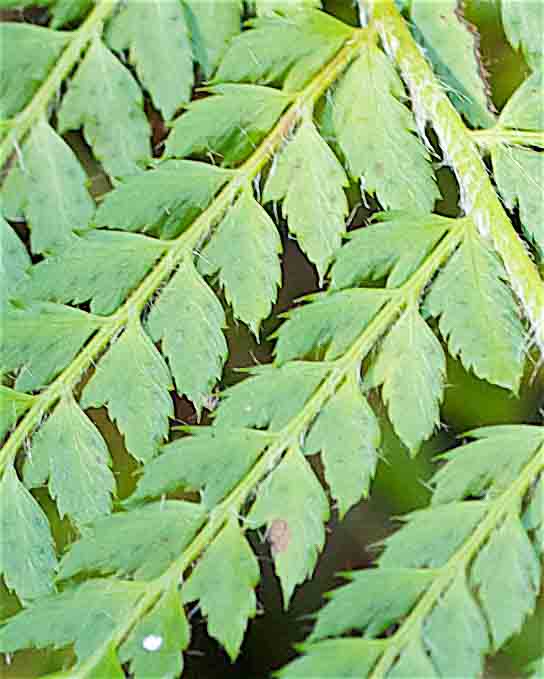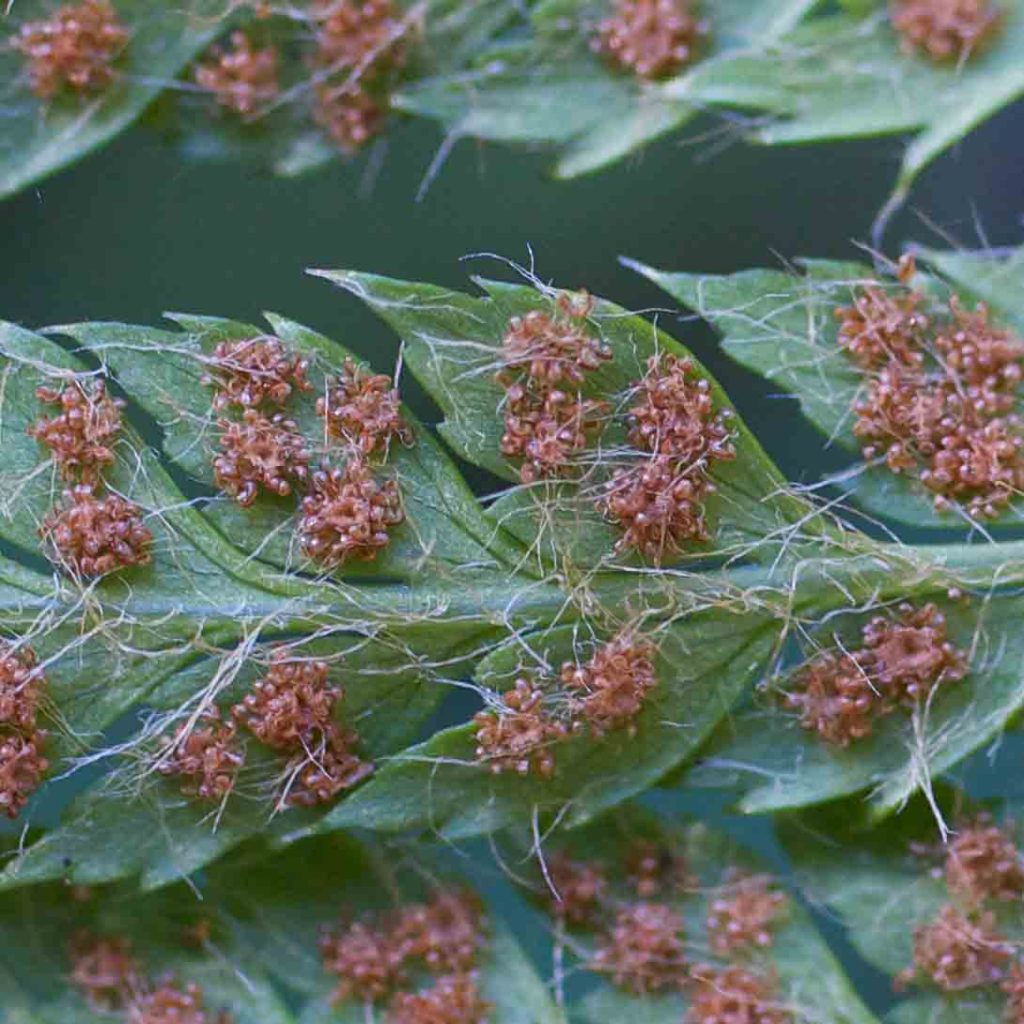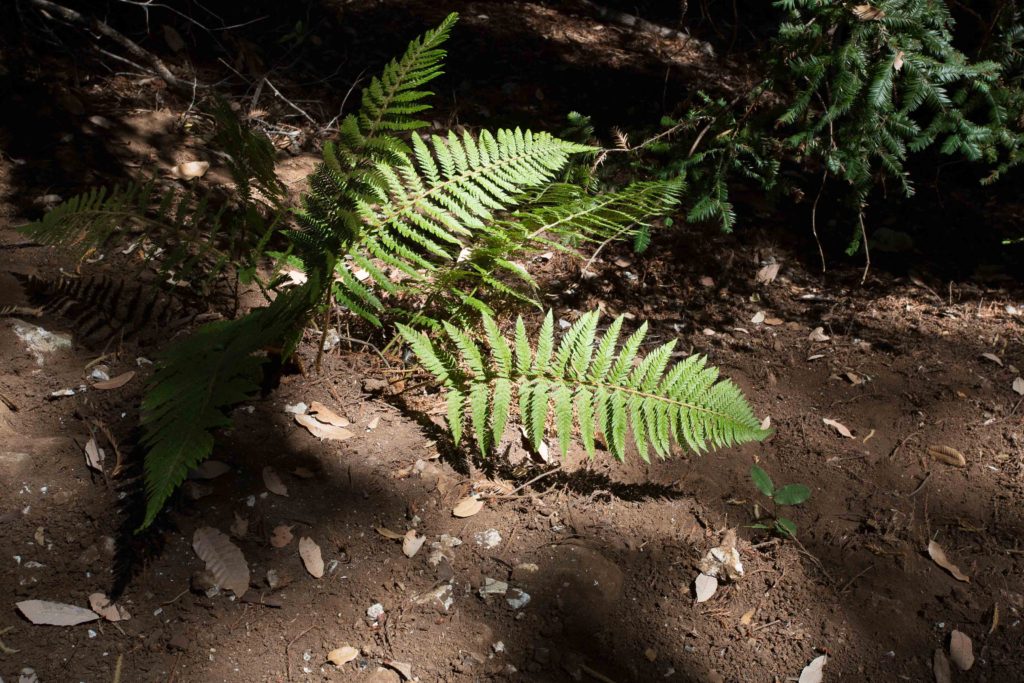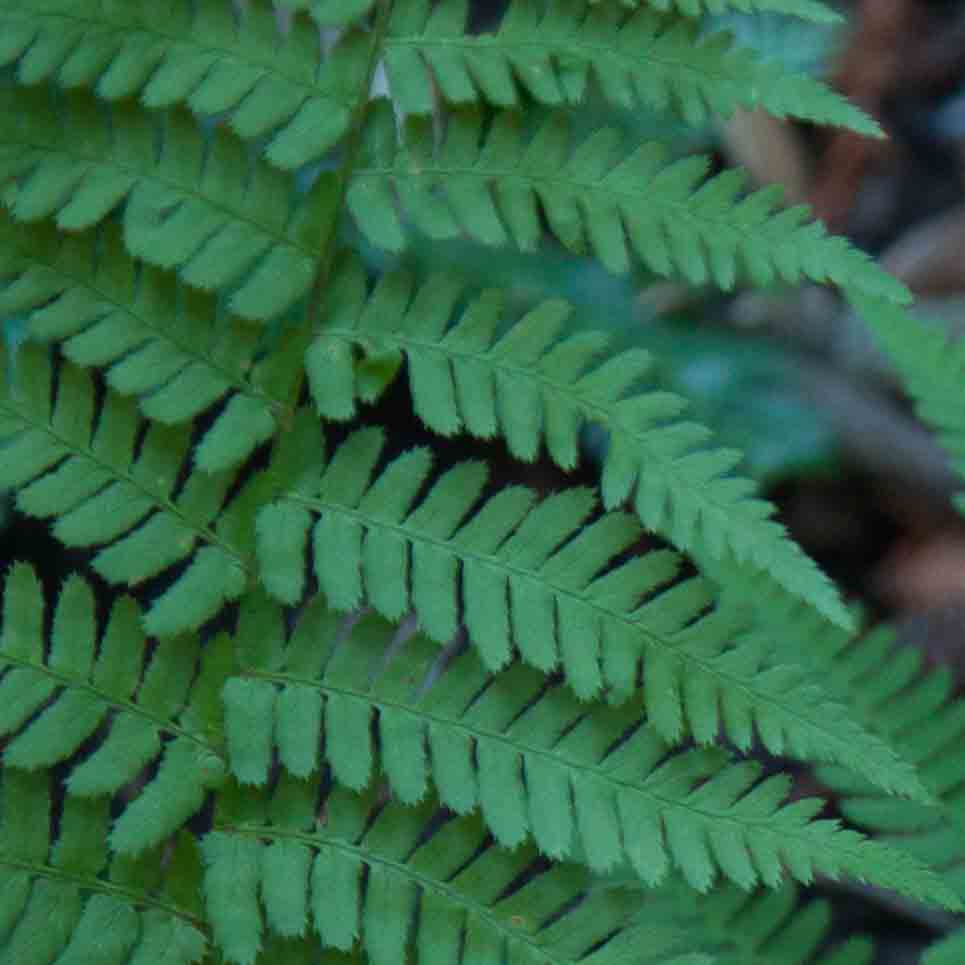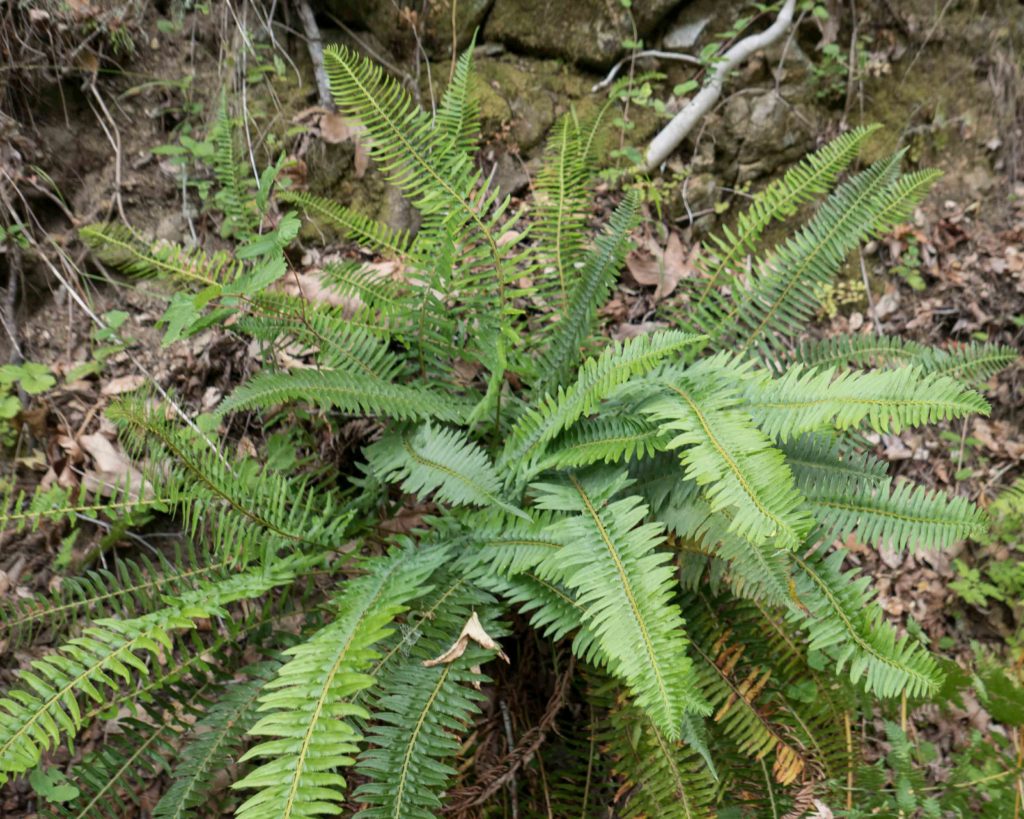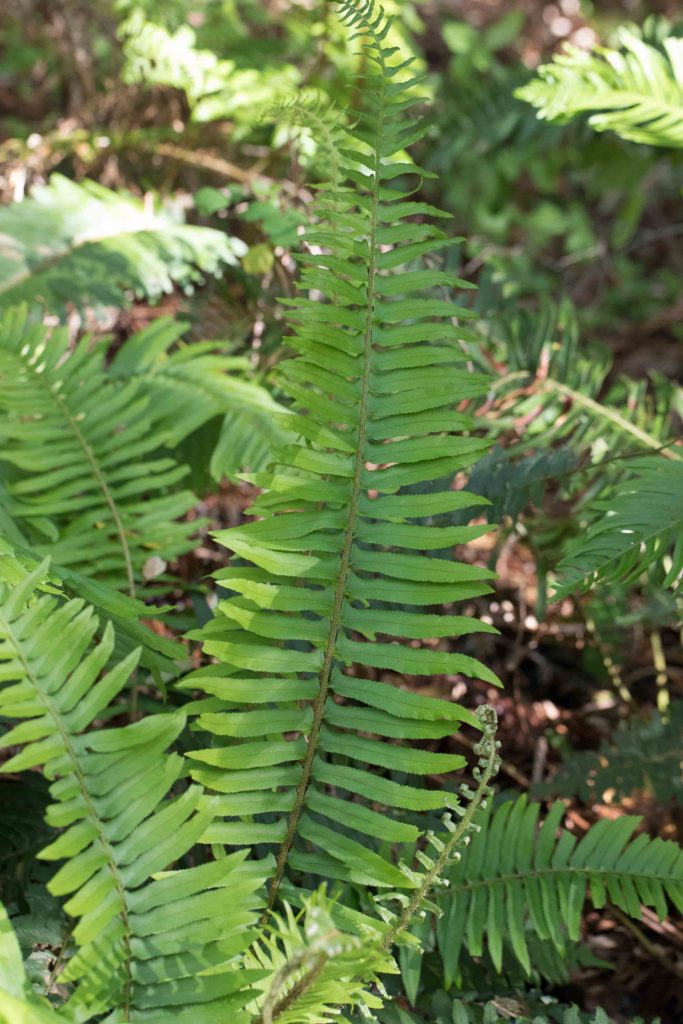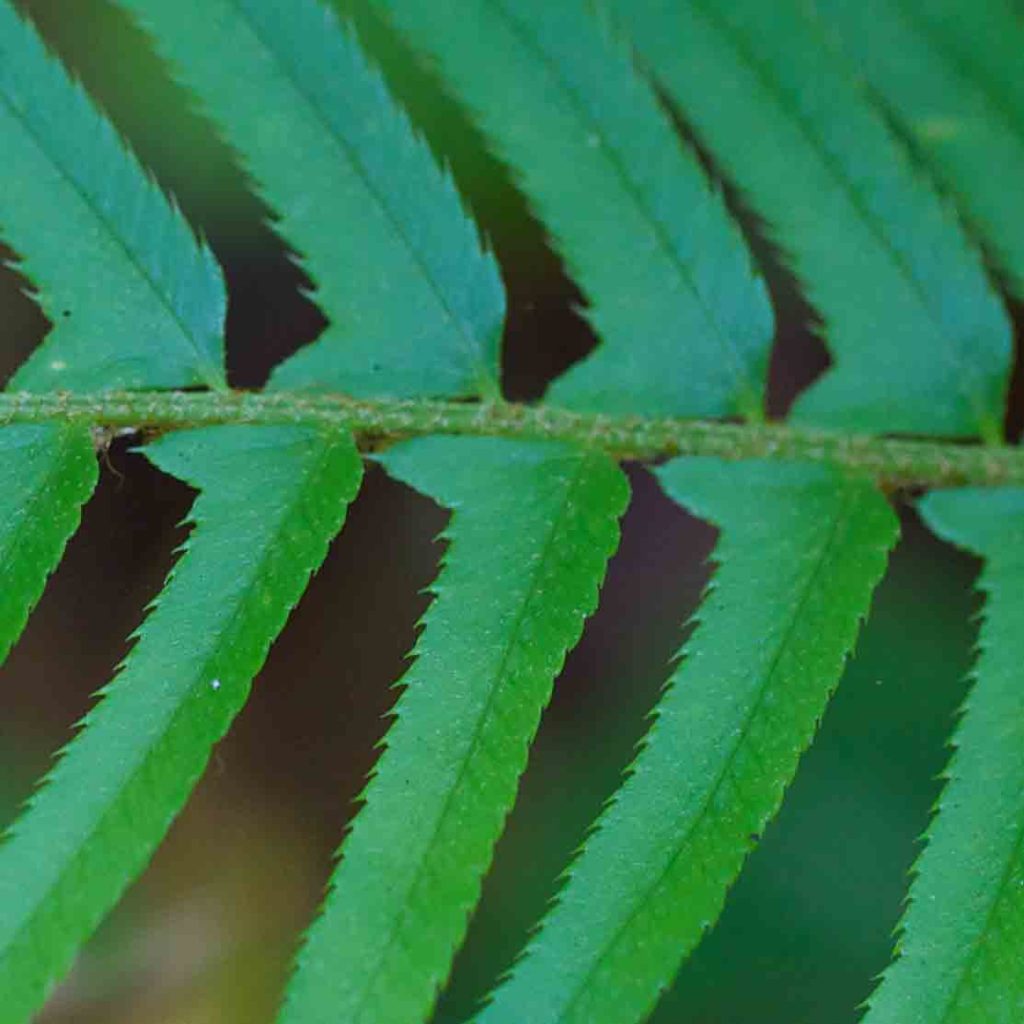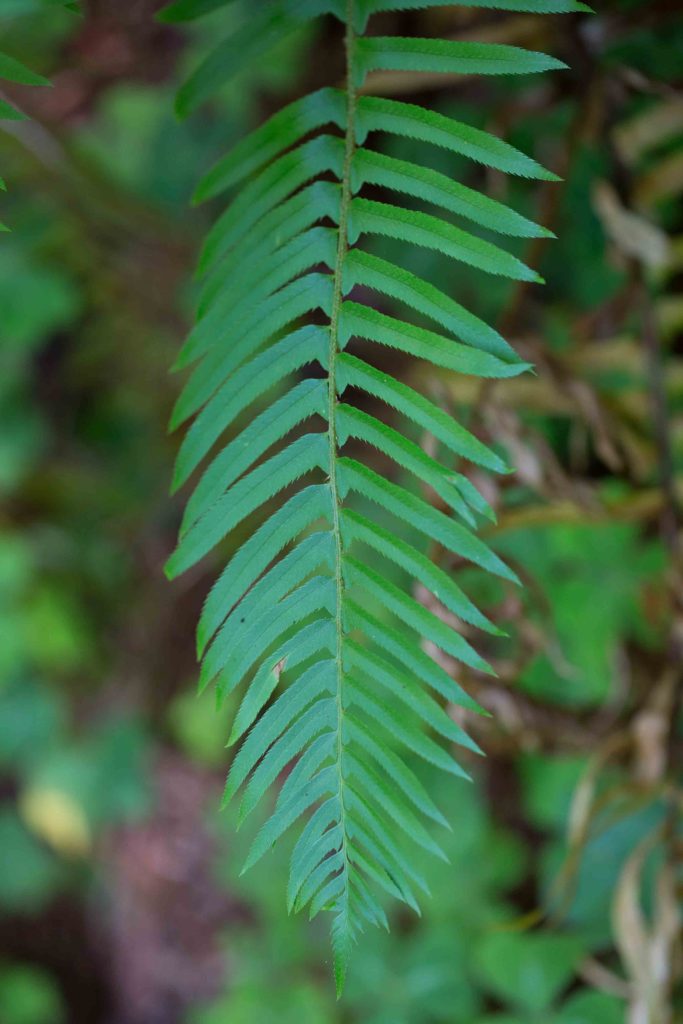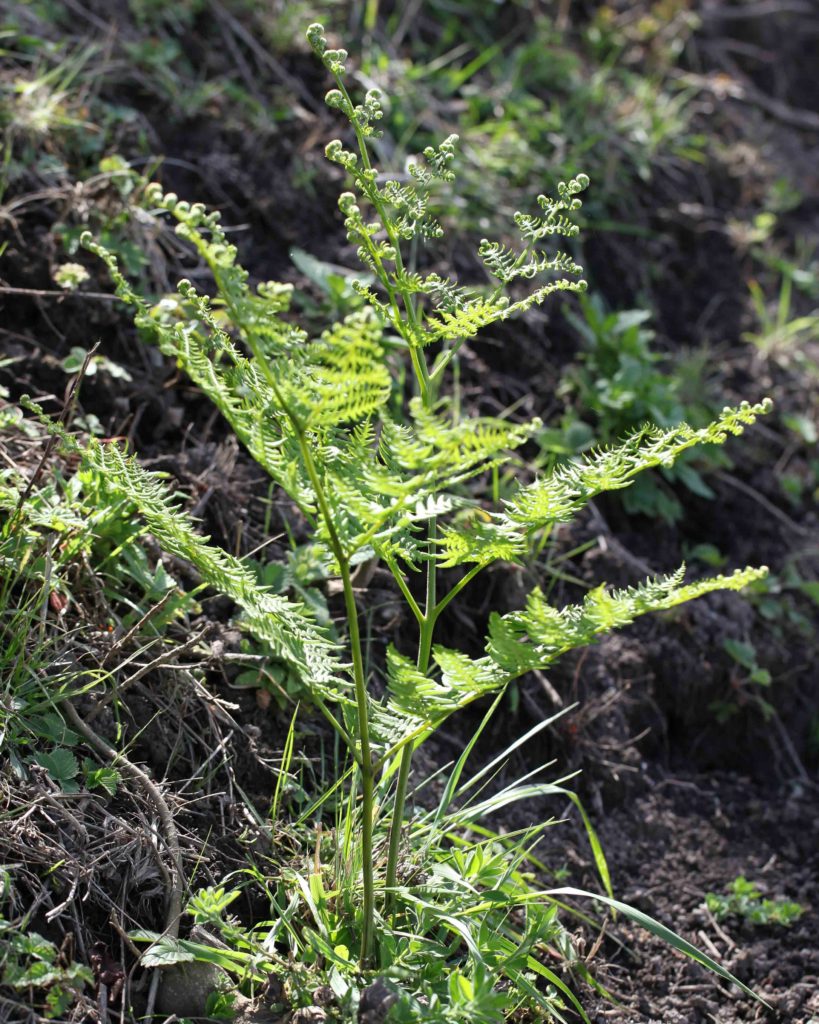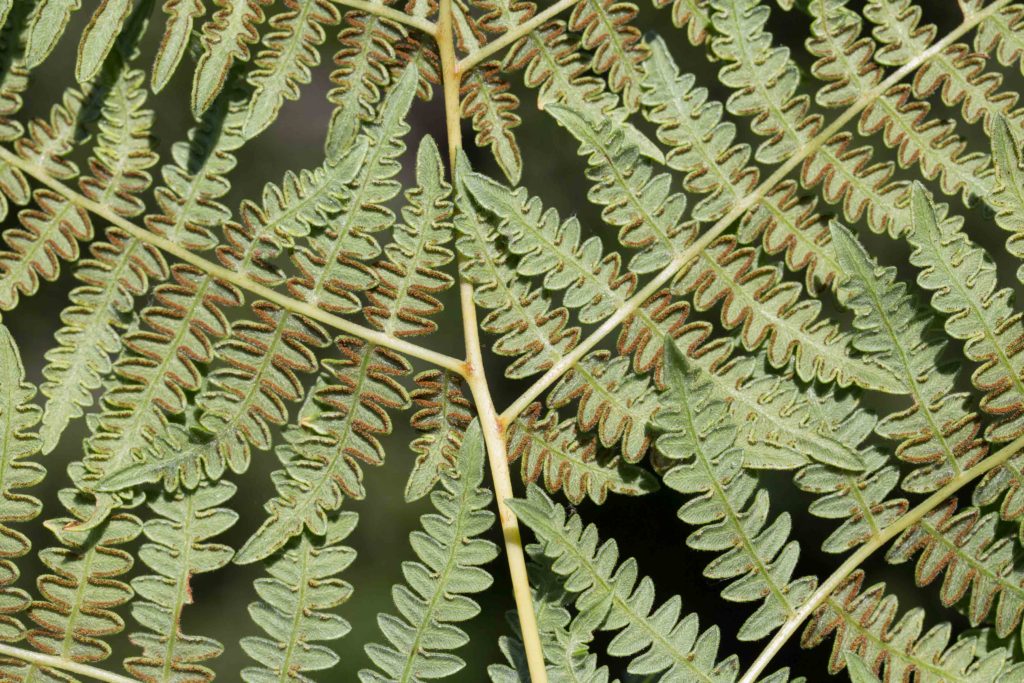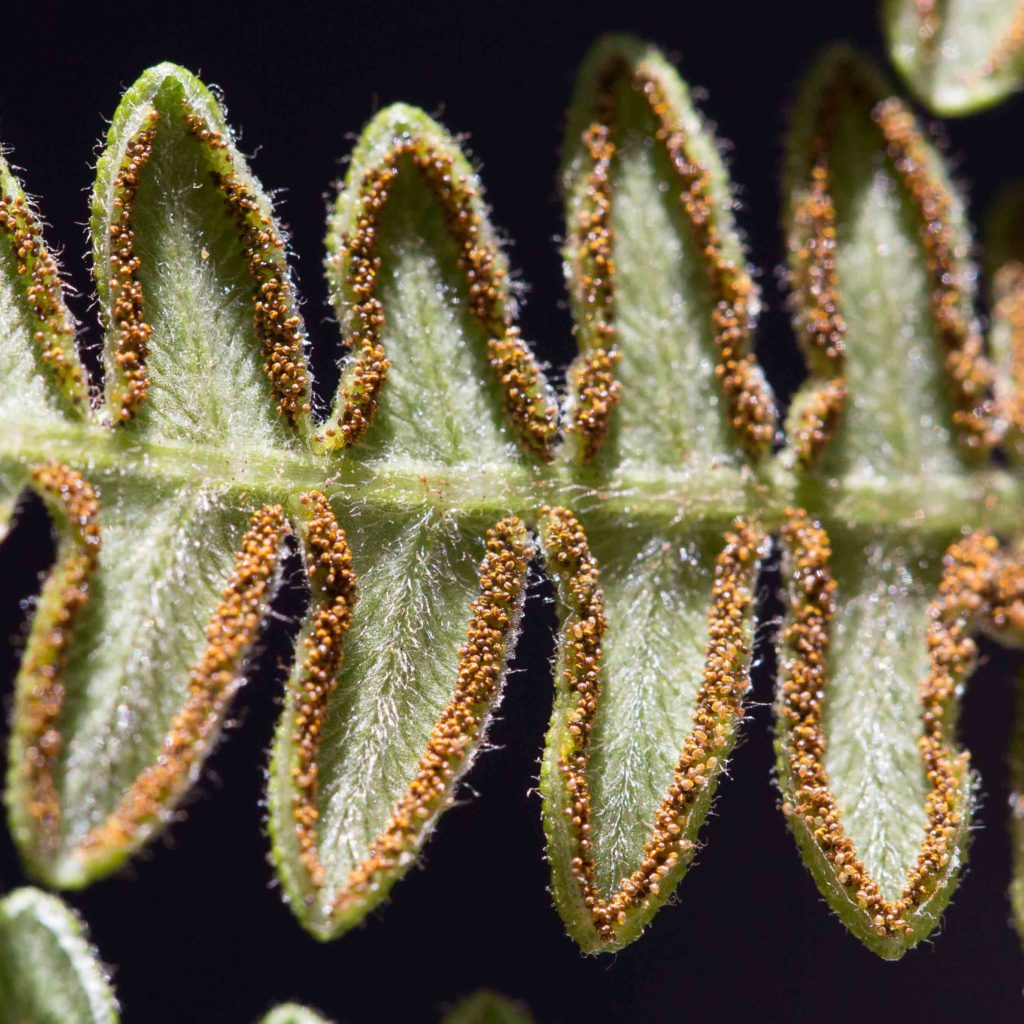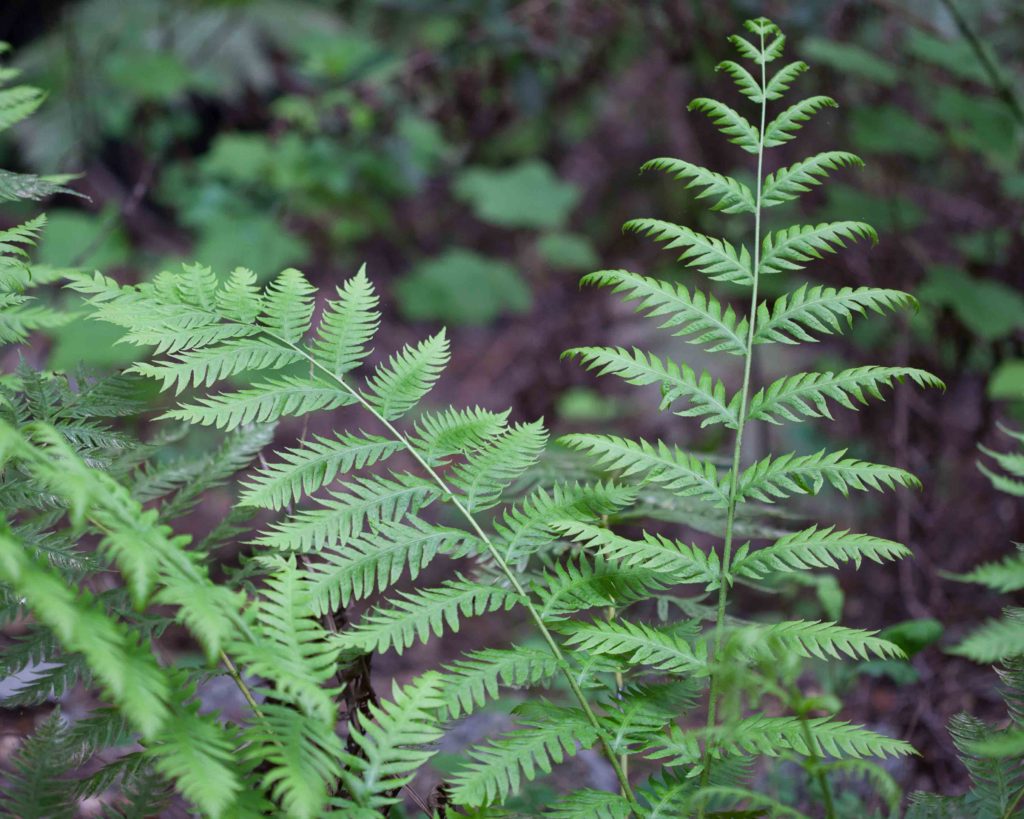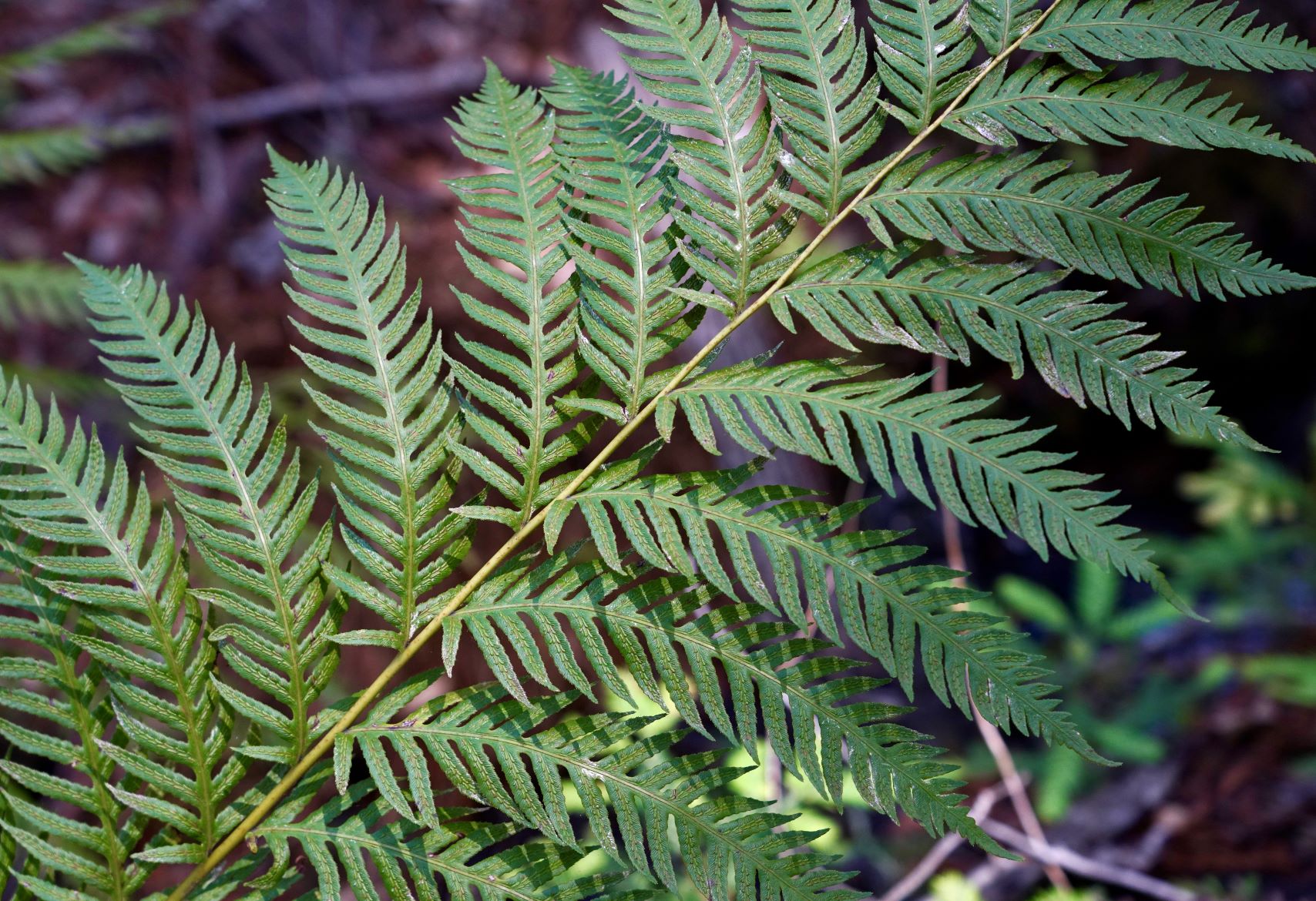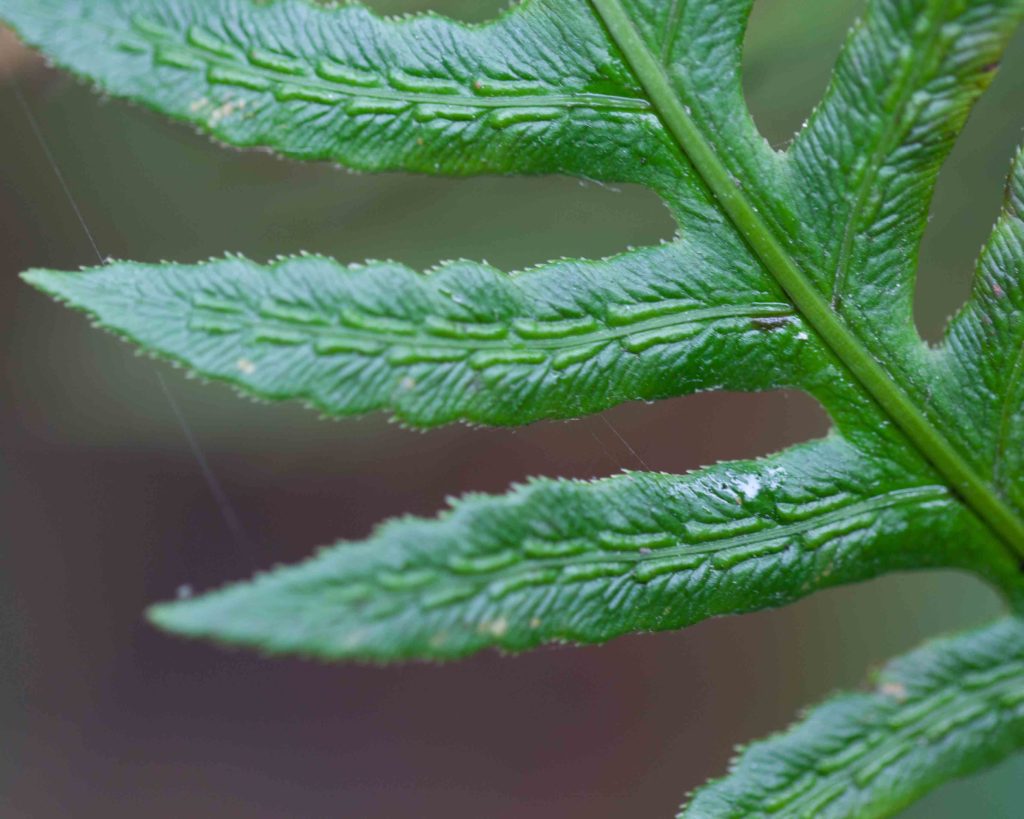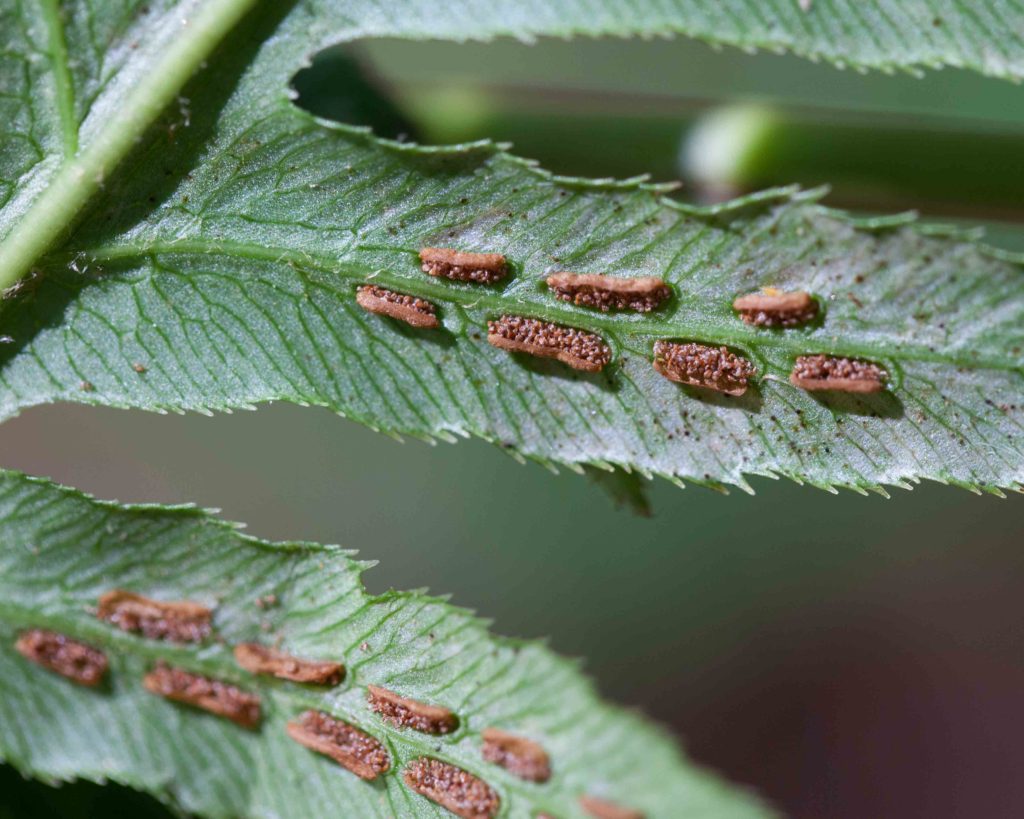Ferns — Various Families
Ferns are not flowering plants. They lack the separate male and female structures that form the basis of most flowering plants’ reproductive processes. Instead of using seeds, ferns make spores. When spores fall on a suitably moist, shady place, they begin the fern’s reproductive cycle. Because ferns need liquid water for a crucial reproductive step, ferns are not found in sunny, dry locations. Fern structures have their own names:
- A fern’s leaf is called a frond. It is divided into pinnae, which may be subdivided into pinnules
- The underside of the pinnules contain sori, which in turn contain sporangia, which produce the spores
- Sori may be covered by a membrane-like indusium. A false indusium is a covering formed by a reflexed margin of the pinna / pinnule. Not all ferns have clearly defined sori
All ferns included here are native to California.
Western Lady Fern – Athyrium filix-femina var. cyclosorum (Woodsiaceae: Cliff Fern family)
Frond:
25–130 cm
Pinnate:
1–2 ×
Pinnule:
Lobed / toothed
Sori:
Round to J-shaped
Indusium:
Round to J-shaped
Notes:
This is easily mistaken for Wood Fern (Dryopteris arguta, see below). However, its fronds are significantly larger and more broadly triangular, noticeably softer to the touch and generally paler in color. The lower 2–4 pinnae are much shorter than those immediately above. Sori may be round, oblong or J-shaped. Indusia, if present, will be similarly shaped, attached on the inner side of the sori, often with hairy margins. Found in meadows and streambanks. Photo #3 by CJH.
Wood Fern – Dryopteris arguta (Dryopteridaceae: Wood Fern family)
Frond:
30–60 cm
Pinnate:
(1)2 ×
Pinnule:
Finely toothed
Sori:
Round
Indusium:
Yes
Notes:
This is the commonest evergreen fern to be found in oak woodlands, each plant producing several fronds from its base. This differentiates it from Western Bracken Fern (Pteridium aquilinum, see below), which has a distinct stem, and fronds branching from it. The fronds are lanceolate, but the pinnules tend to be rounded, with each vein ending in a spine-tipped tooth. The sori are covered by a roundish or kidney-shaped indusium. This could be confused with Lady Fern (Athyrium filix-femina, see above), but Wood Fern fronds feel a little tougher and firmer, and are less broadly triangular. Photo #2 by CJH.
California Sword Fern – Polystichum californicum (Dryopteridaceae: Wood Fern family)
Frond:
40–100 cm
Pinnate:
1–2 ×
Pinnule:
Various
Sori:
Round
Indusium:
Yes, ciliate
Notes:
This is similar to Dudley’s Sword Fern (Polystichum dudleyi, see below) but with some subtle differences. The base of the pinnules is clearly tapered and without lobes. Multiple sori on each pinnule appear to be common. Indusia, if present, are delicate with hairy margins, as with Dudley’s Sword Fern. The fronds are much softer than Sword Fern (Polystichum munitum, see below). This species is thought to be a sterile hybrid between P. munitum and P. dudleyi.
Dudley’s Sword Fern – Polystichum dudleyi (Dryopteridaceae: Wood Fern family)
Frond:
50–100 cm
Pinnate:
2 ×
Pinnule:
Various
Sori:
Round
Indusium:
Yes, ciliate
Notes:
This produces several arching fronds, softer to the touch than Sword Fern (Polystichum munitum, see below). Pinnules are abruptly tapered at their base, often lobed and more or less divided or serrate or pinnately cut. Indusia, if present, are delicate with hairy margins. Found in redwood and mixed evergreen forests.
Sword Fern – Polystichum munitum (Dryopteridaceae: Wood Fern family)
Frond:
60–140 cm
Pinnate:
1 ×
Pinnule:
Serrated
Sori:
Round
Indusium:
Yes, ciliate
Notes:
This is one of the most common ferns, in oak woodland and redwood forests. Each plant may produce many stiff, shiny, deep green fronds. The slender pinnae have serrated margins. The broadened base of a pinna is said to resemble a sword’s hilt. The axis of the frond (the “rachis”) has brown scales. The sori are round. Like other Polystichum, indusia, if present, have marginal hairs and are “peltate”, i.e. with a stem attached to the lower surface like a parasol.
Western Bracken Fern – Pteridium aquilinum var. pubescens (Dennstaedtiaceae: Bracken family)
Frond:
< 1.5 m
Pinnate:
3 ×
Pinnule:
Entire
Sori:
Near margin
Indusium:
False
Notes:
The fronds are similar to Wood Fern (Dryopteris arguta, see above), but Bracken Fern has a distinct stem (typically about 1 m tall) with fronds branching off it; while the fronds of Wood Fern all arise directly from the fern’s base. To remember this, say “Bracken has branches”. Also unlike Wood Fern, it is summer-deciduous (dies back, then produces new fronds in winter). Sori are concentrated around the margins of the pinnules, more or less covered by the false indusium. This fern tends to prefer open areas where it can spread extensively.
Giant Chain Fern – Woodwardia fimbriata (Blechnaceae: Deer Fern family)
Frond:
1–2 m
Pinnate:
2 ×
Pinnule:
Serrated
Sori:
Oblong
Indusium:
Yes
Notes:
This is one of our largest ferns. It favors damp conditions, and is generally found near streams or seeps. The pinnae are clearly separated, and pinnules are pointed and very finely serrated. The common name derives from the neat lines created by the oblong sori, and which are visible on both the upper and lower surfaces of each pinnule. As the sporangia mature, the indusium opens lengthways like a lid, to reveal the sporangia underneath. Photo #2 by CJH.

